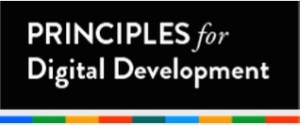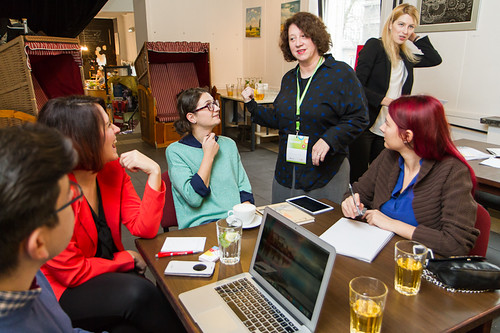I’ve written about how to help Nepal. So… what about Baltimore, site of so much violence, civil unrest, economic injustice, mistrust and lack of opportunity ?
Just like with Nepal, my first comment is going to be: do not go to Baltimore to help. Not yet. Not without a formal affiliation with a LOCAL nonprofit. If you want to help any of these nonprofits, FIRST, you must contact them and tell them what you want to do as a volunteer, onsite in Baltimore or online and offer references that can confirm your abilities and character. If you want to travel to Baltimore, you need to say when you will be in Baltimore, and state that you will pay for your own transportation, housing, food and all other needs, that you are not, in any way, expecting the nonprofit to provide you any funding or support for your travel or accommodations. And you need to be ready for rejection: most of these nonprofits are completely overwhelmed and may not have the resources and funding to involve an influx of outside volunteers.
Here are some credible nonprofit organizations that are based in Baltimore and are focused on economic empowerment, helping economically disadvantaged people, and/or building stronger, more empathetic, compassionate environments. I haven’t fully vetted them beyond knowing they exist and are appropriately registered – I haven’t typed the name of each nonprofit into Google or Bing with words like “complaint” and “fraud” and “sued,” to see if anything came up, for instance. But if I had a lot of money to give, I wouldn’t hesitate to give to each of them:
Enoch Pratt Free Library
Serves the residents of Baltimore with locations throughout the city. In addition to being a traditional lending library, it also provides accessibility services, online tutors,
Internet access, classes and events, and kids and teens services.
Community College of Baltimore County
Provide undergraduate education, workforce development, technology training, and lifelong learning/life enrichment in the Baltimore Metropolitan area.
Maryland New Directions, Inc.
Mission: To provide comphrensive career counseling, employment assistance, and post-employment support to people who are in life and career transition. Since 1973, Maryland New Directions has served over 130,000 individuals looking to become self-sustaining through employment.
Public Justice Center, Inc.
Nonprofit legal advocacy organization. We work with people and communities to confront the laws, practices, and institutions that cause injustice, poverty, and discrimination. We advocate in the courts, legislatures, and government agencies, educate the public, and build coalitions, all to advance our mission of “pursuing systemic change to build a just society.”
The Baltimore Station, Inc.
Concentrates on helping veterans that have fallen on hard times. We know that they suffer a special kind of hell, returning to society with the effects of combat (including Post Traumatic Stress Disorder), often turning to drugs to silence the trauma. We know the cycle that can spin out of control, leading to poverty, estrangement and homelessness. We know what it takes to break that cycle – a highly structured environment – because most of our staff is in recovery themselves and half are veterans. Recovery is not a “quick fix” battle. It’s a long tough war.
Baltimore Cash Campaign
Connects clients to asset building resources, including financial education classes, one-on-one financial coaching, mainstream banking opportunities (instead of for-profit cash-advance and check-cashing companies), and credit counseling (debt is a major challenge to severely economically disadvantaged people), conducts marketing and outreach about the Earned Income Tax Credit (EITC) and other relevant tax credits for low-income workers, provides free volunteer income tax assistance (VITA), and advocates for issues impacting working families
Win Family Services
Target demographics: at-risk youth and their families. Programs: treatment foster care, community mental health, therapy, and a talent development after-school program
Baltimore Humane Society
I believe with all my heart that encouraging compassion and care for animals cultivates compassion and care for humans.
St. Ambrose Housing Aid Center
Works to create and maintain equal housing opportunities for low- and moderate-income people, primarily in Baltimore City, and to encourage and support strong and diverse neighborhoods. (this was added after the blog’s original publication – thanks, Kate Bladow, for the rec)
Maryland New Directions
a non-profit dedicated to improving lives in Baltimore through employment. (this was added after the blog’s original publication)
Don’t stop there: look for nonprofits in Baltimore that are focused on giving all people access to the arts, such as dance and theatre, or that are focused on sports, or senior services, or whatever activity you think could help the people of the city. Look at Volunteer Central Baltimore and VolunteerMatch as well for nonprofits seeking volunteers in Baltimore.
It was a beautiful thing to see all of those local people in Baltimore spontaneously volunteering in their community, starting to clean up even DURING the riots. So many people, so many photos. Just go to Twitter and search for Baltimore and volunteers, and you will see what I mean. Wouldn’t it be great if all of those people, as well as those that were rioting, volunteered with even one of these nonprofits? And wouldn’t it be great if those nonprofits had the training and resources to involve that influx of volunteers?
Also see:
 The Principles for Digital Development were developed per the efforts of individuals, international and local development organizations, including non-governmental organizations (NGOs) and nonprofits, and donors who have wanted to improve the use and promotion of information and communication technologies (ICTs) in development projects. The Principles for Digital Development were created in consultation with The Bill and Melinda Gates Foundation, the Omidiyar Foundation, the Swedish International Development Agency (SIDA), the United Nations’ Children’s Fund (UNICEF), the UN Development Program (UNDP), UN Global Pulse, the UN Fund for Population Assistance (UNFPA), the UN High Commission for Refugees (UNHCR), the UN Office for the Coordination of Humanitarian Affairs (OCHA), UN Women, the World Bank, the World Food Program (WFP), the U.S. Agency for International Development (USAID), the U.S. Department of State, and the World Health Organization (WHO).
The Principles for Digital Development were developed per the efforts of individuals, international and local development organizations, including non-governmental organizations (NGOs) and nonprofits, and donors who have wanted to improve the use and promotion of information and communication technologies (ICTs) in development projects. The Principles for Digital Development were created in consultation with The Bill and Melinda Gates Foundation, the Omidiyar Foundation, the Swedish International Development Agency (SIDA), the United Nations’ Children’s Fund (UNICEF), the UN Development Program (UNDP), UN Global Pulse, the UN Fund for Population Assistance (UNFPA), the UN High Commission for Refugees (UNHCR), the UN Office for the Coordination of Humanitarian Affairs (OCHA), UN Women, the World Bank, the World Food Program (WFP), the U.S. Agency for International Development (USAID), the U.S. Department of State, and the World Health Organization (WHO).



